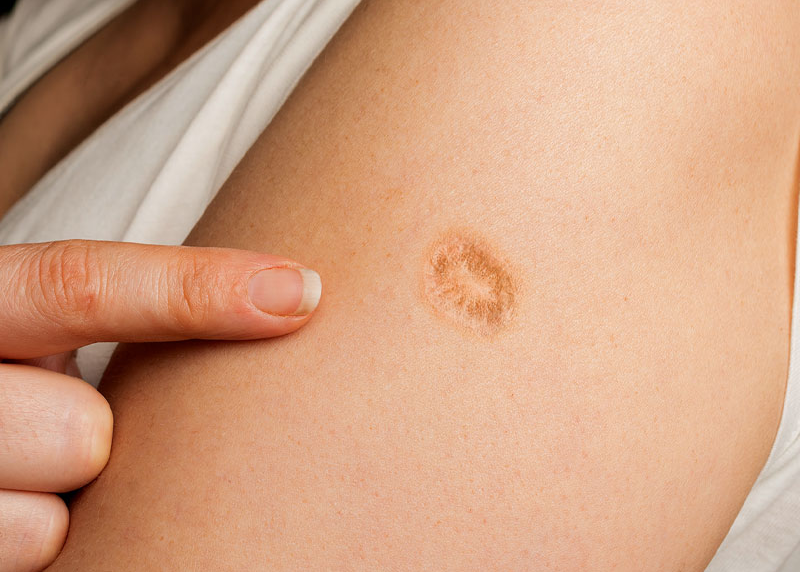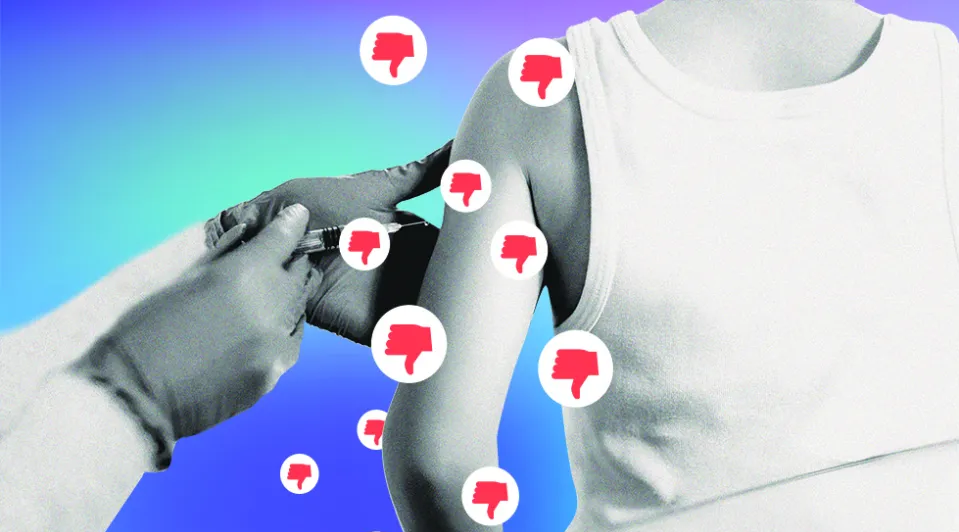In a new document providing guidance for public health officials on COVID-19, the U.S. Centers for Disease Control and Prevention (CDC) estimates the infection fatality rate (IFR) for the disease at 0.4 percent, or about half the nearly one percent fatality rate the CDC estimated in March 2020 when it was predicting up to 1.7 million COVID-19 deaths in the United States.1 2 3 4 5 6
According to the document COVID-19 Pandemic Planning Scenarios, “The planning scenarios are being used by mathematical modelers throughout the Federal government. … The planning scenarios may also be useful to hospital administrators in assessing resource needs.”1 3 5
The CDC IFR estimate is slightly less than half the 0.9 percent estimate provided by an Imperial College London model published on Mar. 16, 2020 that forecast as many as 2.2 million deaths in the U.S. and significantly less than the 1-2 percent estimate given in March by Anthony Fauci, MD, director of the National Institute of Allergy and Infectious Diseases (NIAID).4 7 8 9 10
The CDC’s 0.4 percent rate, however, is for those who show symptoms of COVID-19. The CDC estimates that 35 percent of people who are infected with the SARS-CoV-2 virus never develop symptoms of the disease, which means that the IFR for the virus is 0.26 percent.1 2 3 4 That would place the fatality rate for the SARS-CoV-2 virus just slightly higher than that of seasonal influenza, which is estimated at 0.1 percent.8 9 10
In April, studies conducted by Stanford University and the University of Southern California estimated the IFR for COVID-19 at 0.1 percent to 0.2 percent, which places the rate in the same range at the new CDC rate. Both studies were criticized for underestimating the fatality rate for the disease. The CDC rate is now also attracting similar criticism.11 12
A study published in early May in Health Affairs by a professor at the University of Washington, Anirban Basu, estimated the COVID-19 symptomatic infection mortality rate in the U.S. to be 1.3 percent.13 Using data through Apr. 20, 2020, Professor Basu said that county-specific infection morality rates likely varied between 0.5 to 3.6 percent and that, “The overall IFR for COVID-19 should be lower when we account for cases that remain and recover without symptoms.”
Commenting on the CDC’s estimated 0.26 COVID-19 fatality rate, epidemiologist William Hanage, PhD of Harvard University’s T.H. Chan School of Public Health said, “If you’re taking these numbers to be your guide, they’re obviously lowball estimates.” Epidemiologist Joseph Lewnard, PhD agrees that the CDC’s fatality rates are “certainly at the very low end.5
“Greater clarity on the scientific basis for these estimates is urgently needed,” Dr. Lewnard said.5
In a recent analysis, Stanford epidemiologist John Ioannidis, MD estimated the IFR for COVID-19 at between 0.02 percent and 0.4 percent. “While COVID-19 is a formidable threat, the fact that its IFR is much lower than originally feared is a welcome piece of evidence,” wrote Dr. Ioannidis. “At a very broad, bird’s eye view level, worldwide the IFR of COVID-19 this season may be in the same ballpark as the IFR of influenza.”14 15
References:
1 U.S. Centers for Disease Control and Prevention. COVID-19 Pandemic Planning Scenarios. May 20, 2020.
2 Rosenberg D. CDC: Coronavirus death rate likely just 0.26%. Arutz Sheva May 25, 2020.
3 Sullum J. The CDC’s New ‘Best Estimate’ Implies a COVID-19 Infection Fatality Rate Below 0.3%. Reason May 24, 2020.
4 Tennant M. CDC: COVID-19 Death Rate Far Lower Than Previously Thought. New American May 25, 2020.
5 Whyte LE. Scientists Say New, Lower CDC Estimates For Severity Of COVID-19 Are Optimistic Burszty. NPR May 22, 2020.
6 Fink S. Worst-Case Estimates for U.S. Coronavirus Deaths. The New York Times May 13, 2020.
7 Ferguson NM, et. al. Report 9: Impact of non-pharmaceutical interventions (NPIs) to reduce COVID-19 mortality and healthcare demand. Imperial College COVID-19 Response Team Mar. 16, 2020.
8 McCormack J. Coronavirus vs. the Flu: The Difference Between a 1% and 0.1% Fatality Rate Is Huge. National Review Mar. 14, 2020.
9 Sullum J. Is a 1% Case Fatality Rate for COVID-19 Bad News or Good News? Reason Mar. 12, 2020.
10 Watts A. Coronavirus mortality rate is about 2%, health official says. CNN Mar. 4, 2020.
11 Cáceres B. Study Estimates CA COVID-19 Mortality Rate Under One Percent. The Vaccine Reaction May 3, 2020.
12 Cáceres B. Stanford Study Suggests COVID-19 Mortality Rate Similar to Flu. The Vaccine Reaction Apr. 19, 2020.
13 Basu A. Estimating The Infection Fatality Rate Among Symptomatic COVID-19 Cases In The United States. Health Affairs May 7, 2020.
14 Ioannidis J. The infection fatality rate of COVID-19 inferred from seroprevalence data. medRxiv May 13, 2020.
15 Krieger LM. Stanford researcher says coronavirus isn’t as fatal as we thought; critics say he’s missing the point. The Mercury News May 20, 2020.














12 Responses
I went to a local restaurant for lunch today. They had 2 bins inside the door.
One was to wash the virus off shoes and the other to wash the wash off off of feet.
I refused to step into the one for shoes since I have sandals on. My feet would have been the ones washed. No way. I did step into the dry bin.
The boss man is not too excited about the foot washing but the gov’t says shoes have corona virus on them. No exclusions!!!! Loco???
Why is it that when I click on the references, I get taken back to this site? Seems a bit odd to me.
I agree. The references are poorly linked. It’s unfortunate because it discredits the information shared, in the minds of many.
Yeah, I was able to reach the links, but most were links to other news outlets not the studies or journal reviews themselves. And only the first one links to the Dept of HHS website. It lessens your credibility. We just need good independent science, critical thinking, and honest federal accountability. I’d believe in a heartbeat that the CDC was asked to lie ball the IFR number. Just as it’s believe in a heartbeat that it’ll be years before we get an IFR because we don’t have the ability to test large chunks of population to get real asymptomatic numbers along with the symptomatic ones. Our president and federal government blew calling this one in January. That’s why we are scrambling for answers now. Would have been really great to still have that Pandemic Response Team from the Obama Administration. Let’s hope real, unpressured or biased science will help us figure this one out soon.
IT’S HARD TO COUNT THE LOWER IFRS AS ‘UNFOUNDED’ WHEN THERE ARE SO MANY DOCTORS STANDING TO OBJECT TO THE FORCED COVID19 CAUSE OF DEATH AND FINANCIAL INCENTIVES.
MEANWHILE THE LATEST FLU VACCINE INSERTS LIST IFR AS .6% ADVERSE EVENTS – HARD TO CONSIDER CV AS A KILLER WHEN A VACCINE CAN KILL 3X AS MANY PEOPLE.
So after destroying the economy and more importantly the livelihood of millions of people; gearing up to impose (or at least try) vaccination and tracking and whatever else; leading people to suffer from anxiety attacks, depression, and so on; we are back to what most had suspected from the get go, and that is that this so call pandemic is no more deadly than a normal flu season!!! what I really would like to know is how many of those who developed symptoms were vaccinated against the flu this year, I suspect there is a strong correlation (if not a posibly causation). Of all the people I know, only one person (a nurse who was traveling around the country since the beginning of the year and was in contact with 100 of patients) had a severe disease (although no hospitalization and I do not think she even got tested).
Of course even the CDC got criticized for low-balling. Those who want everyone trembling in fear want inflated numbers.
And when you factor in that around half of the fatalities are among people in nursing homes, an IFR for the rest of us comes down to a wee bit over 0.1%.
I’d like to sincerely know, how they make up those numbers?
I’m no genius in maths but currently the world has registered 394,874 COVID-19 cases (for argument’s sake I’ll give them the numbers even though we all know that too many deaths have been attributed to COVID-19 but have had nothing to do with it) out of that figure about 110,608 are registered in the US.
With a population of 330,872, 370+ in the US the current COVID-19 death in the US would come to 0.03%.
Even if you’d take all registered COVID-19 death worldwide and calculate the percentage against the population of the US, you’d only come up to 0.12%.
What am I missing? For all I can see at present is that there is a “0” missing after the “.”
Yes I agree with the last post, the numbers and percentage doesn’t match, its way lower than what is being said and even what is quoted is lower than expected!
“Figures always lie, and liars always figure.”–MARK TWAIN How can we believe this bunch of clowns. They change their mortality rates, case numbers and medical advice on a daily basis!
I hate to say this but the CDC has made a revised paper, and put the IFR, including asymptomatic cases, up to 0.6%.
I don’t know if this is justified or more politics. They say it comes from “Meyerowitz-Katz, G., & Merone, L. (2020). A systematic review and meta-analysis of published research data on COVID19 infection-fatality rates. medRxiv”.
Unfortunately I think you have to correct everything. It still makes little difference but their actions won’t help the suicidal hysteria.